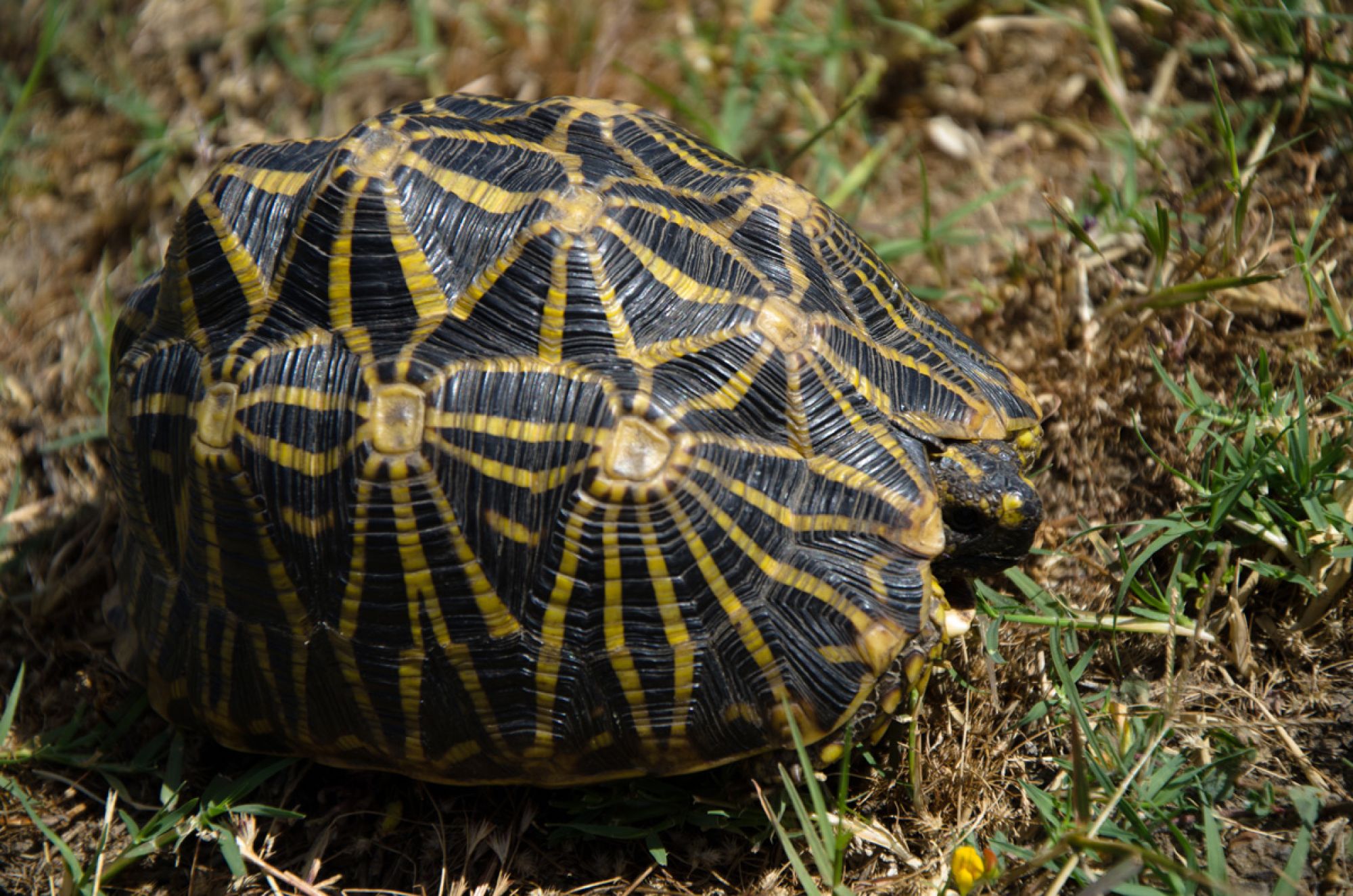Geometric Tortoise
COMMON NAME
Geometric tortoise
Suurpootjie
SCIENTIFIC NAME
Psammobates geometricus
CONSERVATION STATUS
Endangered
IDENTIFICATION
The convex-shaped shell of the geometric tortoise has a bright yellow starred pattern on a black background and a similar, but duller, less-defined pattern on the underside. It is superficially very similar to the more common and widespread tent tortoise but differs from it in that, in the geometric tortoise, the marginal shields are higher than they are wide and there are no buttock tubercles on the back of the hind legs. The front legs are covered with unequal-sized scales and the front feet have five toes. The hind feet have four toes. There is a marked size difference between males (average 100 mm) and females (average 125 mm).
HABITAT
The geometric tortoise occurs only in the low-lying renosterveld shrublands of the Swartland, Upper Breede River Valley and Ceres Valley, where wheat and wine farming, as well as urban development, have led to the destruction of more than 90% of its habitat. The acidic, nutrient-poor soils support a low shrub vegetation including restios, geophytes and grasses. Typical geometric tortoise habitat comprises shale renosterveld and alluvium fynbos vegetation types.
LIFE HISTORY
Sexual maturity is reached at approximately 10 years and females lay one or more clutches of about 1-5 eggs in spring to early summer. The eggs generally hatch after the first winter rains when the ground has softened and fresh young annual plants have appeared, providing food and shelter for the hatchlings. By this time, the fire hazard has also dropped considerably. These tortoises feed on small succulents, herbs and grasses, and will shelter under vegetation when it is too hot or too cold. It is a very shy tortoise and when encountered, will immediately retract into its shell or scramble for the nearest shelter under vegetation.
DISTRIBUTION
This species is endemic to the winter rainfall region of the south-western Cape, in which it is restricted to the low-lying areas of the Swartland, Upper Breede River Valley and Ceres Valley.
THREATS
- Urban and agricultural expansion (wheat, other crop farming and vineyards) threatens remaining habitats.
- Severe fragmentation of remaining habitat puts pressure on small and isolated populations.
- Invasive alien vegetation and animals, such as feral pigs, lead to further habitat degradation.
- Too frequent fires in small, isolated habitats will destroy these populations, however, the absence of fire may also negatively affect the quality of these isolated habitat patches.
- The poaching of specimens from the wild remains a significant potential threat.
CONSERVATION
This species is protected under the Nature Conservation Ordinance of the Western Cape Province and Schedule I of the Convention on the International Trade in Endangered Species of Wild Fauna and Flora (CITES). It is also listed as one of the top 25 most endangered tortoises and turtles in the world.
The first reptile reserve in Africa, the J.N. Briers-Louw Nature Reserve was established in 1972 near Paarl to protect the geometric tortoise and its habitat. At present there are a few more nature reserves protecting geometric tortoise populations. One of these, the Elandsberg Nature Reserve, is a very important remaining site for the long-term survival of this species since it has the largest remaining geometric tortoise population. Various research studies on different aspects of geometric tortoise biology have been carried out.
Further conservation actions required are:
- the establishment of additional statutory conservation areas; private landowners with geometric tortoise populations on their properties can establish conservation stewardship sites and conservancies;
- a Biodiversity Management Plan for this species must be developed; and
- funding for further conservation actions and awareness programmes must be sourced.
